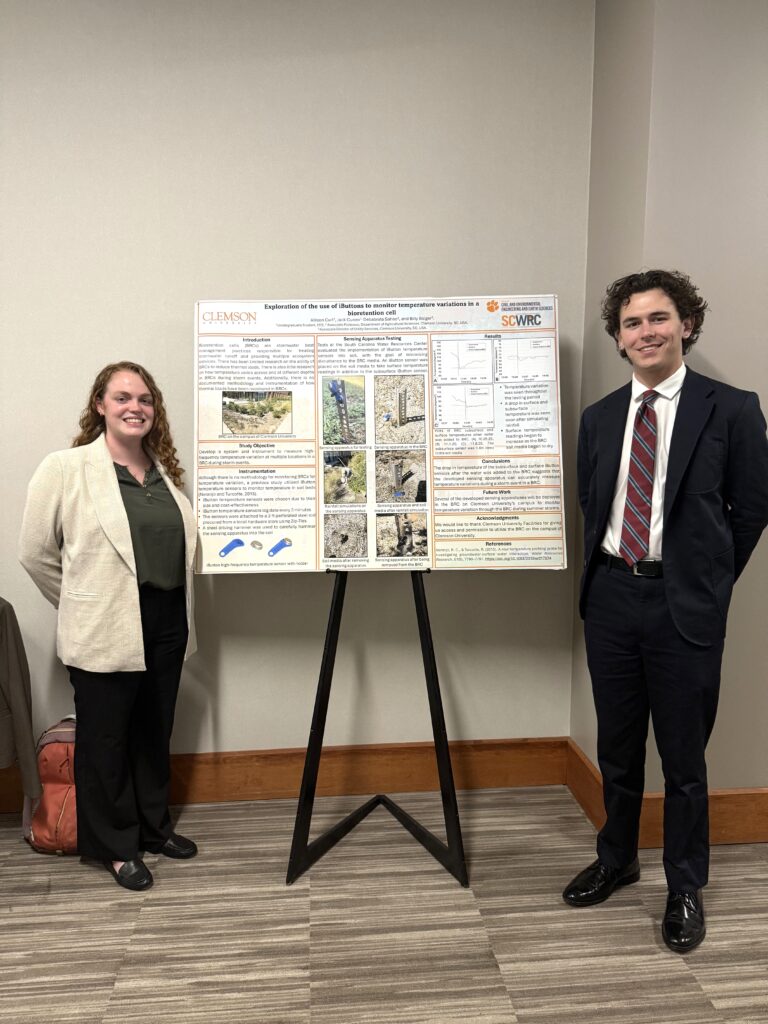Bioretention Cells
As part of their Departmental Honors project in Biosystems Engineering, Jack Cuneo & Allison Curl are researching temperature dynamics in bioretention cells on the campus of Clemson University in Dr. Sahoo’s lab at the South Carolina Water Resources Center. Specifically, they utilize iButton high-frequency temperature sensors to monitor temperature variation across bioretention cells during storm events.

Temperature is a key state variable in bioretention cells and understanding how the temperature varies spatially across these stormwater best management practices is necessary to optimize their performance and efficiency. While working with Dr. Sahoo, they have had the opportunity to present their research at the 2025 Clemson Hydrogeology Symposium and the 2025 Clemson Student Research Forum.


Algal Blooms (HABs)
Daniela Font, a senior in the Biosystems Engineering Program, is helping lead an innovative outreach effort to address harmful algal blooms (HABs) in South Carolina’s stormwater ponds. Under the guidance of Dr. Sahoo, Dr. Jeong, and collaborators from Clemson Extension and Sea Grant, Daniela is developing workshop materials and a survey study to educate homeowners on identifying and responding to HABs. Her work also required her to earn certification in human research ethics—a skill she plans to apply in future projects. Beyond her main research, Daniela has contributed to graduate projects on statewide pond water quality, gaining hands-on experience in fieldwork and advanced instrumentation.


Biopharmaceutical
Adding to this impressive group, Caroline Hansen is making strides in biopharmaceutical research under Dr. Scott Husson‘s supervision. The senior undergraduate explores a new method to purify and concentrate circular RNA, a promising type of medicine used for disease treatment and prevention. They studied circular RNA purification using a filtration method called continuous flow diafiltration and tested special filters called ultrafiltration membranes whose uniform-sized pore dimensions were fine tuned in their laboratory. During continuous flow diafiltration, the linear RNA contaminants elongate and pass through the gold-plated membranes as permeate, while circular RNA is retained. The ultrafiltration/diafiltration method offers a more scalable, continuous approach to make high-quality circular RNA medicines compared to more complex, discontinuous methods like chromatography.


Together, these students exemplify the hands-on, problem-solving spirit of Clemson’s Biosystems Engineering program, tackling challenges from watershed management to cutting-edge biopharmaceutical purification. Their work demonstrates how undergraduate research can create real-world impacts across multiple disciplines.
